Matador Network's Blog, page 947
January 6, 2020
The least-visited US national parks

The United States got its 62nd national park in late 2019 when White Sands got the designation in December. If you’re jonesing to go check it out, a road trip through New Mexico is pretty easy. But of the 61 other national parks, some aren’t quite so straightforward to get to. They may involve jetting in tiny planes to remote parts of Alaska or flying 13 hours over the Pacific Ocean.
That’s not to say America’s least-visited national parks aren’t worth visiting. It’s just to say that to enjoy their sparsely populated grandeur, it might take some work. Here’s a look at the 10 least-visited parks in America, and why they’re worth the trip.
Editor’s note: Illustrations courtesy of Reservations.com.
10. Virgin Islands National Park — St. John, US Virgin Islands
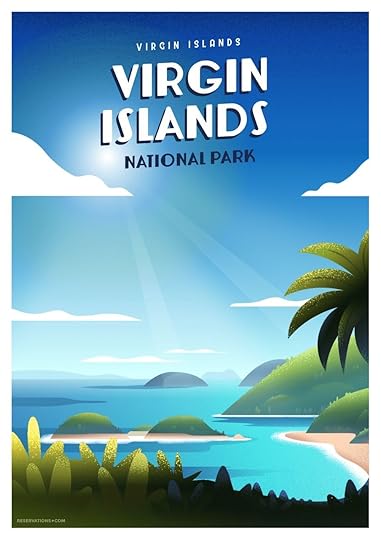
Photo: Reservations.com
2018 visits: 112,287
Though it sustained some serious damage during Hurricane Irma back in 2017, the resilience of the vegetation in Virgin Islands National Park is nothing short of spectacular. And this tropical wonderland is the prettiest swath of American paradise you’ll find without crossing half the Pacific Ocean.
Unlike most of the seldom-visited parks, this one’s relatively easy to reach with nonstop flights from many large East Coast hubs to St. Thomas and St. Croix. From there, it’s a short ferry ride over to St. John, where two-thirds of the island is covered in national park land. Inside the park you’ll find one of the most-photographed beaches in the country along the white sands of Trunk Bay. It’s never particularly crowded, per se, but if you want even fewer people check out Hawksnest or Caneel Bay, which feels especially remote during the week.
Snorkeling here is some of the best in America, and Trunk Bay has a 225-yard, self-guided snorkel trail rich in tropical fish and coral reef. The diving is also world-class, though you’ll have to go through an operator as beach diving is prohibited. If the water’s not for you, Virgin Islands National Park has 22 trails that wander through old plantation ruins and tropical forests, a perfect way to stay active before killing the rest of your vacation on the beach.
9. Wrangell- St. Elias National Park and Preserve — Alaska
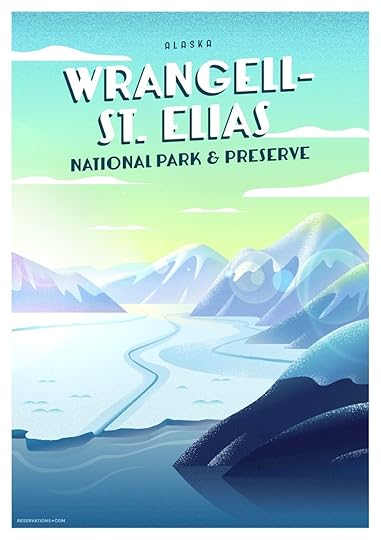
Photo: Reservations.com
2018 visits: 79,450
The largest national park in the nation covers 13.8 million acres, stretching from the Gulf of Alaska through the St. Elias mountains. It’s a vast, remote landscape, though as Alaskan national parks go, it’s fairly easy to reach. By “easy,” we mean it’s about a three-hour drive from Anchorage to the closest entry point at Glennallen and upwards of five hours to other parts of the park.
Inside the park, you’ll find some of the most spectacular drives in North America, with nary a car to join you. Stop by one of the ranger stations and get a CD to play in your car as you bump along the Nabesna and McCarthy Roads. This way you’ll get a little explanation of the lakes, towering volcanoes, and thick boreal forest passing by your window. Just remember that the roads aren’t exactly what you’d call “smooth,” and getting from one part of the park to another can take over three hours.
Nature aside, you’ll also want to hit the old mining town of Kennecott. Like a relic frozen in the Alaskan cold, this town of red façades is on the National Register of Historic Places and stands as the best preserved example of the state’s mining legacy. You can take guided tours of the town, and its 14-story mill, before heading out to hike the rest of the park.
8. Dry Tortugas National Park — Florida

Photo: Reservations.com
2018 visitors: 56,810
Once upon a time, the red-brick hexagonal Fort Jefferson was a prison described by one inmate as “without exception, the most horrible place the eye of man ever set upon.” Now, these are the words of a man going to prison in Florida before the advent of air conditioning and bug spray, so take that for what it’s worth. But in ever-developing Florida, Dry Tortuga National Park and the fort located therein are among the few places that still feel truly remote.
Getting here isn’t easy, but is at least straightforward. If you’ve got your own boat, the park is about a 2.5-hour ride from Key West. Lacking your own boat, you can take a National Parks Service ferry for $175 or jump on a flight for about $300. Once there, you’ll be treated to the clearest turquoise water on the US mainland, where snorkeling with colorful fish can take up your entire day if you want it to. The marsh islands around the fort are also filled with rare birds like the black noddy and red-footed booby.
To make the most of the park, book a campsite and stay overnight. Daytime visitors are all gone by about 3:00 PM, leaving only you and the handful of other primitive campers on the island for the night. It’s a little like being Robinson Caruso, if he had portable battery packs and knew he was leaving the next day.
7. Katmai National Park and Preserve — Alaska
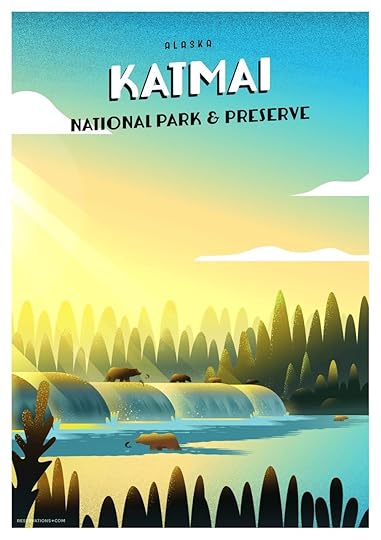
Photo: Reservations.com
2018 visitors: 37,818
Fat Bear Week sounds like the kinda thing you’d show up to accidentally during a family vacation to Myrtle Beach, and you’d either really love it or it would scar you for life. Fortunately, the real Fat Bear week is something completely different, an annual celebration in Katmai National Park, best known as home to over 2,000 brown bears. In early fall, the bears feast on sockeye salmon to see who can bulk up the most for the impending winter, and people literally take a week to vote on Facebook and crown the fattest.
But you don’t have to enjoy bears competitively salmon-gorging to make the most of Katami. Obviously, bear viewing is the big attraction. But like most national parks in the Last Frontier, this one is full of massive open spaces and few people. Hike through the Valley of 10,000 Smokes, where the 1912 Novarupta volcano eruption left a stark, eerie landscape. Or if you prefer to go in the spring, spend some time at Brooks Falls and wait for the formerly fat bears to emerge from hibernation as salmon dodge them in the Brooks River.
The only part of the park that’s anywhere near developed is Brooks Camp, which you can reach via float plane from nearby King Salmon. Getting to King Salmon isn’t terribly difficult, either, involving a short flight from Anchorage. Because no roads lead into the park, this is literally your only option — unless you want to go by boat, but you’ll need your own vessel as no commercial tours exist.
6. North Cascades National Park — Washington

Photo: Reservations.com
2018 visitors: 30,085
Lost behind the skyline backdrop mound of Mt. Rainier and the lush rainforest of the Olympic Peninsula is Western Washington’s third national park, just east of Bellingham on the Canadian border. The park is home to some of the most dramatic scenery in the state, where you’ll find aquamarine mountain lakes sitting right under sharp snow-capped peaks — a little slice of Switzerland a couple hours’ drive from Seattle.
The park makes up one-third of the North Cascades National Park Complex, along with the Ross Lake and Lake Chelan National Recreation Areas. Those areas get slightly more visitors but are still worth paddling around while mountains reflect in the water. If you want a stiff challenge, try climbing Desolation Peak, whose trailhead is only accessible by boat and offers a hike that’s nearly all straight-up. Jack Kerouac spent the summer of 1956 here working for the forest service — if you want to impress your friends with some in-hike fun facts.
If you’re into rock climbing, you’ll find a great concentration of climbs here, most notably Cascadian Rock, and others with inviting names like Terror, Torment, and Fury. The good news is that you won’t be sharing the rocks with many other people. Despite being the closest seldom-visited park to a major city, North Cascades somehow still gets forgotten. All the better for you, getting all the beauty of the Pacific Northwest minus the ever-growing population.
5. National Park of American Samoa — American Samoa

Photo: Reservations.com
2018 visits: 28,626
We can forgive people for never having visited this park in far-flung American Samoa, as even when you account for Alaskan bush flights it’s still the longest to reach. At minimum, you’ll have 13.5 hours of flying from the West Coast, traveling a full 2,600 miles southwest of Hawaii. But great things aren’t often gained easily, and such is the case with visits to the National Park of American Samoa.
Of the five islands that make up America’s southernmost territory, three of them — Tutuila, Ta’u, and Ofu — are part of this national park. The scenery looks nothing like the rest of America, including Hawaii, where sheer rock islands covered in tropical plants drop straight into turquoise water and bring to mind visions of Thailand and Indonesia. The waters off Ta’u and Ofu offer clear access to coral reefs and over 900 species of tropical fish swimming around you. Or you can climb to the top of Mt. Alava, a relatively easy 7.4-mile trek that rewards you with a panoramic view of the islands.
Lodging is sparse here, and American Samoa offers the unique experience of a local homestay if you opt to spend the night on Ta’u. It’s the best way to learn about the oldest culture in Polynesia and will also involve a boat ride from a local fisherman. A visit is an almost surreal experience, planting yourself square in a foreign land that’s still somehow a US territory.
4. Isle Royale National Park — Michigan
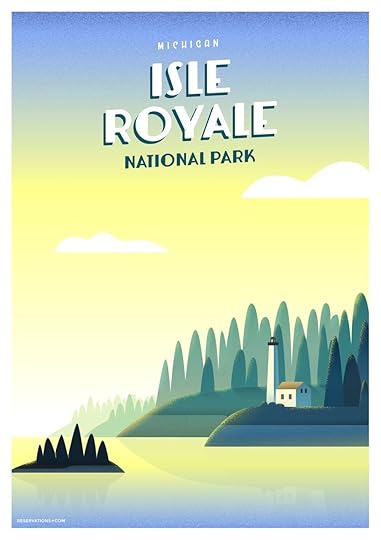
Photo: Reservations.com
2018 visits: 25,798
Getting to Isle Royal can be a little like living out Wreck of the Edmund Fitzgerald, as the icy waters of Lake Superior often make for a cold and tumbling ride. Of course, this park off Michigan’s Upper Peninsula is closed during the coldest months of the year, so your odds of getting caught in an ice storm are minimal. Still, the trip to this isolated patch of Michigan wilderness won’t be easy, with three hour boat rides leaving from towns four hours NORTH of Green Bay.
The island may be hard to reach, but unlike some of these seldom-visited parks, it offers a full-service lodge at the Rock Harbour Lodge where you can cook in your cabin or eat at the restaurant. If you’d prefer to spend time in the wilderness, you’ll likely have to contend with the abundance of moose who call the island home. Interestingly, they are part of the longest-running predator-prey study in America, examining their relationships with the island’s wolves.
You’ll also be right next to one of the greatest collections of wreck dives in America as 10 major wrecks sit right off the coast of Isle Royale. The cold waters have kept them better preserved than the wrecks you’d find in the Caribbean, and some date back to the 19th century. If you’d rather not bring a wetsuit, you can stay on top of the water and fish to your heart’s content.
3. Kobuk Valley National Park — Alaska
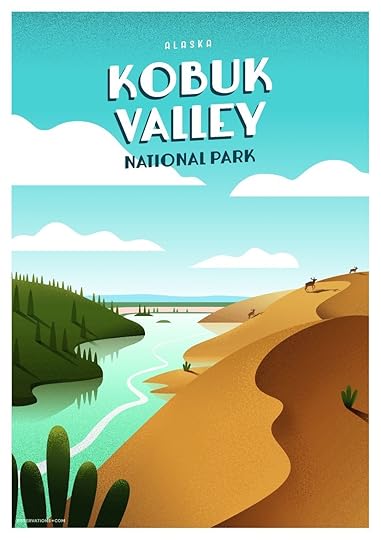
Photo: Reservations.com
2018 visitors: 14,937
If you saw a picture of someone standing atop a sand dune well north of the Arctic Circle sweltering in 100-degree heat, you might think it’s some sort of scene of post-apocalyptic climate change. But that’s actually not at all uncommon in Kobuk Valley National Park, where glacially formed sand dunes shoot for 25 miles in different directions, and summer temps can reach into the triple digits.
If your desert trek through Alaska gets too taxing, you can always jump in the Kobuk and Salmon Rivers, both of which flow through the park. Much of the park is made up of the wetlands surrounding the rivers, and while you will see plenty of mountains in the Brooks Range, the valley itself is pretty flat. You’ll also definitely want to bring a guide with you as Kobuk Valley’s 1.7 million acres aren’t much for roads or signage. And if you get lost the only thing resembling civilization are a handful of native Inupiat villages.
Getting here is no piece of cake either. No roads go here, and the only planes that fly to the park are air taxis from the thriving metropolises of Bettles and Kotzebue. Those cities are only accessible via flights from Fairbanks and Anchorage, respectively, and during summer it’s possible to be flown in with a packable boat and float your way through the park.
2. Lake Clark National Park and Preserve — Alaska

Photo: Reservations.com
2018 visits: 14,479
Interestingly, the second least-visited national park in America is only about a hundred miles from Anchorage, making it much easier to reach than some other parks lower down on this list. A short drive from Anchorage to Iliamna and an air taxi later, you’re right in the thick of some of Alaska’s most glorious wilderness, where the Chigmit Mountains stand watch over 6,300 square miles of untamed backcountry.
The coolest adventure in the park is a seaplane flight to Turquoise Lake, which, as the name might imply, shines a bright blue-green in the shadow of the mountains. You can spend a couple of days camping here if you like, where typically your neighbors will only be moose, birds, and the occasional bear. If you need something more than a tent, you can spend the night at the Silver Salmon Lodge, which offers fully furnished guest cabins and a full-service restaurant.
You’ll also find rugged Alaskan tundra at the Turquoise-Telaquana Plateau, thick forests along the coast, and miles of designated Wild and Scenic Rivers. If you’re looking to experience Alaskan wilderness in all of its grey-skied glory, you’ll get the best of it here. And best of all, it won’t take you days to reach.
1. Gates of the Arctic National Park and Preserve — Alaska

Photo: Reservations.com
2018 visitors: 9,591
To put this into perspective, Great Smoky Mountain National Park got 11.3 million visitors last year — which means it got an average of three times more visitors per day than the Gates of the Arctic gets in an entire year. Its sparse visitation is understandable, though; Gates of the Arctic requires flying from Fairbanks to Bettles, Alaska, then taking an air taxi into the park. Once you’re there, you won’t find much in the way of amenities. And by that we mean no roads or toilets.
That said, if you’re looking to unplug and disconnect, this is about the ultimate place. Spread across the park’s 8.5 million acres, you won’t find more than about 50 people, and needless to say you won’t find cell service or WiFi either. You will, however, find adventures like kayaking down the Noatak River, where you’ll truly get the feeling you were the first person to ever explore the area. Hikes along the Central and Eastern Brooks mountain ranges — effectively the northern terminus of the Rocky Mountains — are equally awe-inspiring. You can summit the highest ones at about 9,000 feet and many at 3,000. No matter how high you are, gazing out at the park will give you the feeling that the land around is all yours. Or better, belongs to no one at all.
The National Parks Service doesn’t give recommendations on what to do at Gates of the Arctic because everything here is dependent on your skill level.You’re best advised to take a guide along with you and learn how to traverse the most untamed national park in America somewhere other than the internet. 

More like this: The best uncrowded state parks near the five busiest national parks
The post The 10 least-visited national parks in the US, and why you should go appeared first on Matador Network.

‘Netherlands' declared official name

The debate over whether the country is called “Holland” or “the Netherlands” ends now. Starting this month, the Dutch government announced that the country will always be referred to as the Netherlands, its official name. That means companies, ministries, universities, and embassies will only be able to refer to the country using this legitimate title.
The decision is part of a $319,000 rebrand designed to update the Netherlands’ international image. This includes more efficiently managing large numbers of tourists and the creation of a new country logo that features the “NL” initials with the national flower — an orange tulip. Previously, the tourism board used a logo of a tulip and the word “Holland.”
While the Dutch certainly understand the difference between Holland and the Netherlands, the two names proved confusing to foreign visitors who often used them interchangeably. Although regularly used as a moniker for the entire country, Holland actually only refers to two provinces. The official name change represents the tourism industry’s efforts to better represent the entire country.
According to a spokesperson for the Foreign Ministry, it is a little strange to promote only a small part of the Netherlands abroad, that is, only Holland.”
The tourism board expects 30 million international tourists by 2030, and this name change is just part of a strategy designed to help the country present a fresh, updated brand to visitors. 

More like this: As Amsterdam fills with crowds, head to Groningen for a more local feel
The post appeared first on Matador Network.

Free national park days 2020

As has become a National Parks Service tradition, there will be five free entry days for all US national parks in 2020. If your resolution was to do more hiking, explore more of the country, or spend more time outdoors, you’ll probably want to take note of these dates:
January 20 (Martin Luther King Day)
April 18 (First day of National Park Week)
August 25 (National Park Service’s birthday)
September 26 (National Public Lands Day)
November 11 (Veterans Day)
When you visit national parks on any of these days, you will be able to enter without paying an entry fee, which could save you up to $35 per vehicle. And this doesn’t just apply to the big names like Yellowstone and Yosemite but any of the 419 parks in the US national park system.
Although the parks themselves will be free to enter, fees for amenities like boat launches, transportation, and camping will still apply.
If you plan on visiting multiple parks throughout the year — and not just on the dates above — you should probably consider the National Parks and Federal Recreational Lands Pass, which costs $80 and grants unlimited entry to over 2,000 federal recreation areas, including national parks and wildlife refuges. 

More like this: 5 underrated alternatives to America’s busiest national parks
The post National parks will be free on these five days in 2020 appeared first on Matador Network.

Scuba diving on Coiba Island, Panama
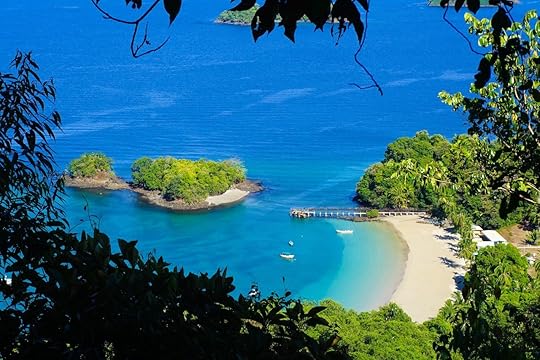
As the engine of the Panga boat roared over the Pacific Ocean swells, we traced Panama’s coastline, where volcanic rock cliffs gave way to secluded beaches backed by dense jungle. With every coastal bend, I expected to see a towering hotel, a small town, or even just a few houses on the beach. But I never did.
I had originally come to Panama to surf, but instead we were headed to a place even more rugged and wild than the coast I was observing: Coiba Island. Coiba is a national park and nature preserve whose unique history has allowed it to evolve into a haven for a diverse array of wildlife, some of which exist exclusively on the island. Coiba Island seems to exist in another world, one untouched by humans and full of natural wonder, rugged nature, and thriving wildlife — both above and below the water.
A surf trip becomes a scuba lesson
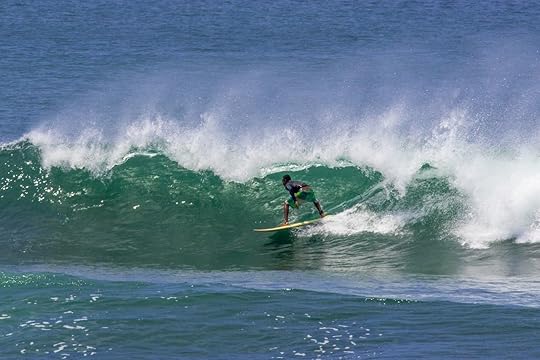
Photo: Kristina Vackova/Shutterstock
Although Panama connects Central America to South America, it runs west to east — so western Panama is sometimes thought of as northern Panama, since it’s the part of the country closer to North America. The Panama Canal lies just inside the eastern half of the country, closer to Colombia than to Costa Rica.
On the country’s western end, the Pacific Ocean’s coastal highway stops at Santa Catalina. To continue westward from there requires backtracking nearly 50 miles from the coast to reach a major highway. I was in Santa Catalina, staying at the Thunderbomb Surf Camp, to surf the iconic right-hand point break.
One day, I’d taken off on an overhead right-hand wave and ridden it much farther than I’d expected to, deep into the channel. Just as I’d begun my paddle back to the lineup, an even bigger set had appeared on the horizon. Unlike the wave I’d taken off on, the oncoming waves were massive, shoulderless walls of water closing out in front of me. Diving underneath the first one, I’d gotten pinned against the rocks on the seafloor and then washed toward the toothed shoreline. Both board and I had tumbled over the rocks until we’d come to a rest on an exposed part of the reef. While I was fairly cut up but otherwise okay, my board had several punctures and a buckled tail. It was no longer rideable.
The next day I’d wandered through the streets of Santa Catalina, wondering what to do with my remaining time in Panama. I’d come across the Panama Dive Center, the seemingly best of the dozen or so dive shops along the main road of Santa Catalina, and decided now would be as good a time as any to get my scuba certification. I’d had no idea that our dive site, Coiba Island, was globally renowned for its flourishing marine life. Divers from all over the world travel to Santa Catalina for its proximity to Isla Coiba.
Coiba Island’s dark history
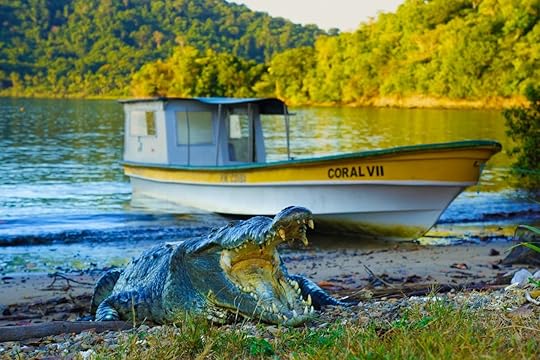
Photo: Inspired By Maps/Shutterstock
Isla Coiba hasn’t always been a flourishing dive site. For decades the island served as a penal colony for Panama’s most dangerous prisoners. Founded in 1919, and shut down almost 90 years later in 2004, the island prison once held as many as 3,000 prisoners in 30 scattered camps across the island. Coiba’s penal colony housed political prisoners of dictators Omar Torrijos and Manuel Noriega. It was during this time that the island’s name became synonymous with cruelty, torture, and death.
“Los Desaparecidos” was the title given to the hundreds, if not thousands, of prisoners who disappeared during their sentences, who now most likely occupy the thousands of unmarked graves on the island. After the dictatorships, Coiba became a criminal prison where society’s worst farmed and ranched Coiba to provide for their existence on the island. Due to Coiba’s limited contact with the outside world, the nature on the island flourished during its dark history.
Isolation lets nature and wildlife flourish

Photo: Kristina Vackova/Shutterstock
Like the Galapagos Islands, Isla Coiba’s isolation from mainland Central America allowed for species to evolve and uniquely adapt to the island. According to the Smithsonian Research Institute located on the island, “Coiba Island is a real-time experiment in evolution — large species of animals grow smaller, smaller ones larger, and many undergo some sort of change due to the ‘island effect.’”
The incredibly low amount of human contact the nearly 200-square-mile island has had over the last few hundred years has made the island, which is the largest in Central America, a scientific frontier in evolution research. Among the 147 bird species found in Coiba Island National Park are crested eagles and scarlet macaws, two species that have all but disappeared from mainland Panama. Coiba Island is a sanctuary for migratory wildlife and other common species in Central America like crocodiles, monkeys, and sea turtles. The island is also home to many endemic species, such as the Coiba Island agouti, a small rodent, and the mantled howler monkey.
Because of the island’s protected status as a nature reserve, national park, and UNESCO World Heritage site, only 60 guests are permitted on the island overnight. Most tour operators don’t actually visit the island but run trips to the island’s surrounding waters and beaches. Beyond the ruins of the prison, the only buildings on the island are a crude dorm set-up that serves as the Smithsonian Research Institute and the park’s ranger station, which has two cabins that guests can book.
The first underwater breaths, alongside vibrant marine life
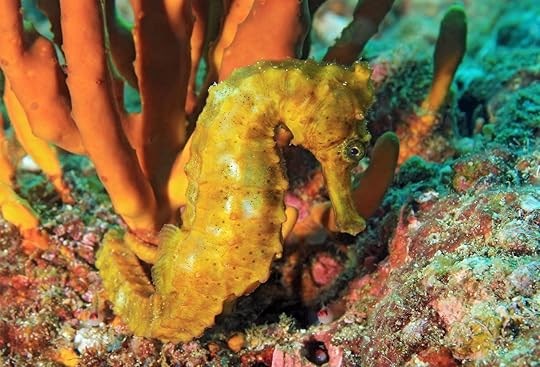
Photo: Andaman/Shutterstock
As our Panga boat’s roar turned into a hum, and we drifted closer to the island, the deep blue hues of the Pacific Ocean morphed into shades of turquoise and green that I thought only existed on postcards. Our boat anchored by an enormous rock offshore, and we prepared to dive. After checking all the bells and whistles of my dive equipment, I entered the water for my first dive. My nerves rose as we descended below the ocean’s surface.
Taking my first breaths from my regulator while following the anchor line down, I glanced towards my divemaster, who motioned me to look to the seafloor. We were descending upon several blacktip reef sharks. We circled the reef, encountering a hawksbill sea turtle, needlefish, and two large longtail stingrays, before coming to a patch of sand to go over dive skills.
The skills most people perform in a pool during their dive certifications, I was executing surrounded by marine life. Over the next several days, I thoroughly explored the reef systems off of Coiba Island and was overwhelmed by what I found. Every nook and cranny of the reef was teeming with life. When I was focused on moray eels tucked into small caves or camouflaged rockfish hiding in plain sight, schools of thousands of tuna, barracuda, or jackfish would pass overhead. After one ascent, a whale shark appeared just as we were boarding our boat to leave.
My dive experience in Coiba National Park was not unique, not for the location at least. The waters around Coiba are home to over 750 species of fish, over 30 shark species, and 20 species of whales and dolphins. With each dive, I descended into a world of abundant marine life, the likes of which are becoming increasingly rare. Each beach we visited seemed to belong in the South Pacific or the Caribbean, with snow-white sands colliding with electric blue water in front of a backdrop of verdant jungle. Additionally, the west side of the island is said to be peppered with near perfect surf.
Coiba Island stands as a lofty goal for what all national parks and nature reserves should be: heavily protected, scarcely encroached upon, and a refuge for wildlife. 

More like this: Cozumel is every drift diver’s dream
The post Coiba Island, once Panama’s isolated prison, is now a scuba diving paradise appeared first on Matador Network.

Why sushi places use frozen fish

People in the United States are generally led to believe that food pulled straight from the earth is the best quality and most nutritious — and in most cases that’s true. Frozen food doesn’t garner the same gushing approval. A slab of fish crusted over with ice simply isn’t as appealing as a vivid orange salmon recently plucked from its home in the river. This fresh over frozen thinking is often extended to sushi, too. Yet frozen can’t always be equated with low quality at a sushi counter. In fact, in some cases, previously frozen fish is healthier and safer to eat.
Outside of some Michelin-starred sushi restaurants that fly fish in daily from Japan, much, if not all, of the raw fish you eat at sushi restaurants is previously frozen. These techniques are what allow restaurants in landlocked areas serve seafood that’s just as good as restaurants right on the ocean.
“Most consumers misunderstand what fresh versus frozen really means,” David Tam, co-founder of the Manhattan-based sushi restaurant ROLLN tells me.
The first thing you should know is that the Food and Drug Administration requires certain types of fish — most wild-caught salmon (like sockeye and coho) and freshwater fish — always be frozen before serving at a restaurant. In fact, in a 2004 article for The New York Times, then-director of the FDA’s Office of Seafood George Hoskin said, “I would desperately hope that all the sushi we eat is frozen.”
Chef David Chang put it more bluntly on an episode of his podcast The Hottest Take: “Freshness in a sushi restaurant is literally marketing,” he says on the show. “It’s a lie. You don’t want to eat a fresh fish. A lot of the sushi fish that you get — it’s frozen.”
It’s not all for health reasons. In some cases, freezing can enhance flavor, too. Take tuna for example, a prized fish at any sushi restaurant. Most tuna fishing boats are out on the water for days or weeks at a time. Using a system called superfreezing, fishermen immediately freeze their tuna catch at negative 60 degrees Fahrenheit or less. This stops spoilage and keeps the flesh of the fish from acquiring off flavors and losing protein and fat, according to the Food and Agriculture Organization of the United Nations (FAO). Studies cited by the FAO found that fish are 60 to 80 percent water, and quickly freezing creates ice crystals that maintain the flavor and texture of fresh fish.
Tam, of ROLLN, uses tuna as an example to illustrate the difference in the types of freshness.
“If we get frozen piece of tuna this morning from our supplier and we defrost it and serve it that night, that’s fresh,” he says. “That’s going to be way fresher and better tasting than a piece of tuna that’s never been frozen, but has just been sitting there for four days.”
That’s why Tam thinks fresh versus frozen isn’t the best guideline when you’re measuring the quality of fish.
“The best guideline — if you’re buying it yourself, it’s having a good relationship from the people you’re buying the fish from, being able to look at the fish, smell it, see it, touch it, taste it — that’s how you’re going to make sure that you’re getting great quality fish,” explains Tam.
That’s great advice if you’re preparing your own sushi at home, but the average person is going out on the town for their sushi. If you’re concerned about the freshness of your sushi at a restaurant, you’re better off at looking at elements like the color and texture of your dish.
“It should be firm and should have a bouncy kind of texture,” continues Tam. “With most fish, you don’t want soft and mushy. It should be firm and clean and not fishy tasting. There should be a little bit of that sweetness and that freshness from the ocean. When you smell it, it shouldn’t smell fishy at all. If you’re able to press on the meat, it should kind of bounce back. You shouldn’t be able to leave an indent in there.”
If you love sushi but you’re skeptical of frozen food, that’s understandable. But the science (and experts) prove there’s nothing to fear when it comes to frozen. 

More like this: How to eat salmon without hurting the environment
The post Why the best sushi isn’t always fresh appeared first on Matador Network.

5.8-magnitude Puerto Rico earthquake
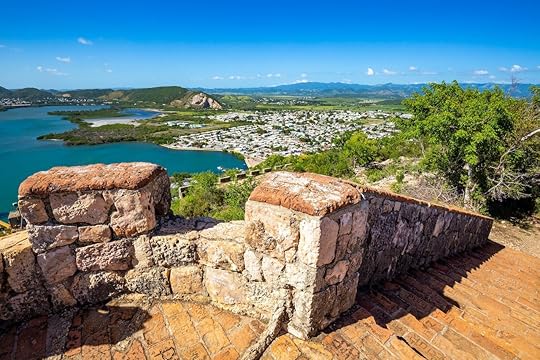
The southern coast of Puerto Rico was hit this morning by a 5.8-magnitude earthquake. The quake hit at 6:32 AM, causing small landslides, power outages, and serious damage to several homes. Following the quake were a series of smaller temblors, including another magnitude five quake at 10:51 AM that shook power lines. There have been no reports of casualties and no tsunami threat.
Five homes collapsed in the southern town of Guánica, and an additional 29 were severely damaged.
As reported by the Associated Press, there have been several earthquakes on the southern coast of Puerto Rico in the past couple of weeks. The first one happened on December 28, and they all ranged in magnitude between 4.7 and 5.1.
View this post on Instagram
Possible UNESCO World Heritage sites
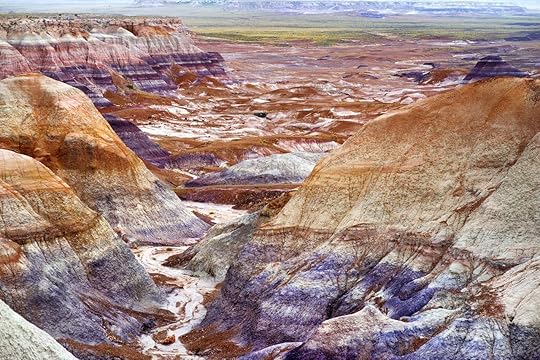
It’s rarely surprising to learn that a major landmark has been designated a UNESCO World Heritage site. Pick a major city in any of the 167 state parties with listed landmarks, and you’ll almost certainly recognize at least one. After all, more than 1,000 sites of natural and cultural importance have already earned protected status across the globe. It’s a big world out there, however, with no shortage of UNESCO-worthy attractions, and it can be surprising to learn what hasn’t made the list. At least, not yet.
In an effort to keep the long list of global knockouts up to date, the organization invites state parties to send in lists of tentative sites of “outstanding universal value” for consideration before being officially nominated. Those interested can peruse the nearly 2,000 sites currently on the list to learn a little bit more about the world, see what’s in store for the organization, and, inevitably, get some travel inspiration. To pique your interest, these are the 19 US landmarks currently on the tentative UNESCO World Heritage List.
1. Big Bend National Park

Photo: Zack Frank/Shutterstock
Yellowstone and Mesa Verde national parks were both included in the first round of UNESCO inscriptions in 1978, representing the US alongside 10 other global sites. Several parks have since received World Heritage status as well, including Yosemite and Grand Canyon national parks. Big Bend, located in southwest Texas, might be next. It was established in 1944 and runs along the Mexican border, spread across the Chihuahuan Desert, the largest in the US, with the Rio Grande forming its southern boundary. Not just of natural value, Big Bend also houses dinosaur fossils and evidence of human history dating back 10,000 years.
2. The Brooklyn Bridge
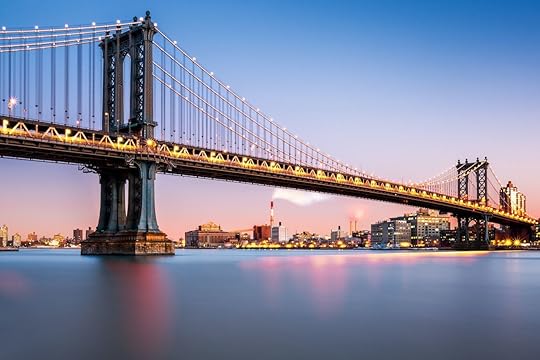
Photo: Mihai_Andritoiu/Shutterstock
Anyone who has seen a movie in the past decade could pick the Brooklyn Bridge out of a lineup, whether as Miranda and Steve’s reconciliation site in Sex and the City, where Peter Parker professed his love in webbing for Gwen Stacy in The Amazing Spider-Man 2, or as a recurring casualty of action movies set in New York City. Completed in 1883, it was one of the first roadway bridges ever built in the US and the first steel suspension bridge built anywhere in the world. Construction was a sizable undertaking, lasting 14 years and resulting in a bridge measuring more than a mile long over the East River between Manhattan and Brooklyn. Today, it’s a defining feature of one of the world’s most iconic skylines, backdropping countless films, as well as the lives of the many millions who live in, and visit, New York City.
3. California Current Conservation Complex
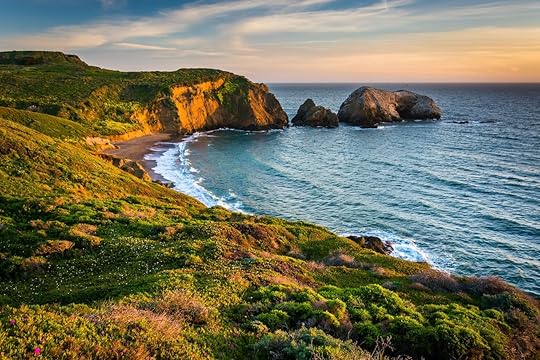
Photo: Jon Bilous/Shutterstock
The California Current Conservation Complex isn’t a single site deserving of a post on the World Heritage List. It comprises much of the best of Central California’s coast, from Monterey Bay and the Farallon Islands to parts of Point Reyes National Seashore and the Golden Gate Recreation Area. In total, the complex includes 20 distinct marine reserves between Point Arena in Northern California’s Mendocino County and Point Piedras Blancas in San Luis Obispo County farther south. Significant marine life, including great white sharks and sea turtles, call the coast home, as do a number of seabird species. Blue whales, the world’s largest animal and an endangered species, also make appearances in Central California’s waters.
4. Central Park
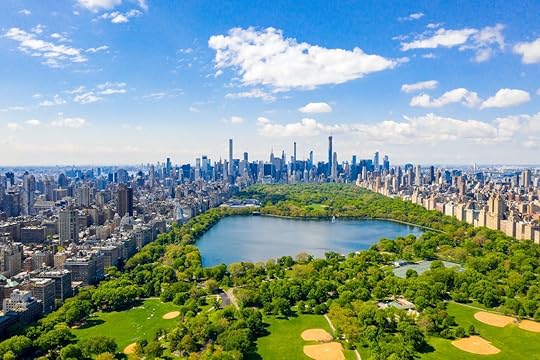
Photo: Ingus Kruklitis/Shutterstock
You might think there’d be more, but NYC only has one World Heritage site at present: the Statue of Liberty. It’s an obvious choice, but ask a New Yorker, and they’d probably recommend adding Central Park to the list, too. The park was designed by Frederick Law Olmsted, winner of an 1858 competition, and includes features like gardens, water bodies ranging from lakes to reservoirs to ponds, architectural and artistic hallmarks like bridges and sculptures, and plenty of green spaces to enjoy on a nice afternoon. According to UNESCO, it’s one of the finest, most distinguished examples of urban design in the world.
5. Civil rights movement sites
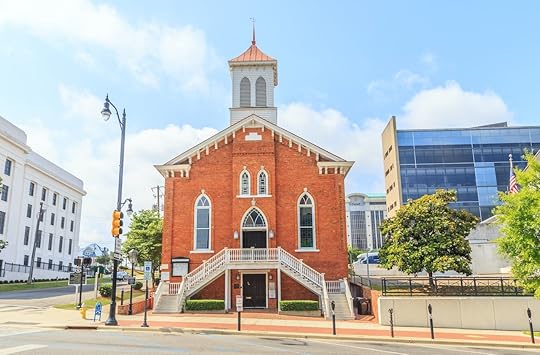
Photo: Mccallk69/Shutterstock
Three Alabama historical sites from the civil rights movement were together submitted to UNESCO’s tentative list in 2008: Dexter Avenue King Memorial Baptist Church in Montgomery, where Dr. Martin Luther King Jr. was a pastor from 1954 to 1960, and the Bethel Baptist and 16th Street Baptist churches in Birmingham. The Bethel Baptist Church earned its spot in the submission as the Alabama Christian Movement for Civil Rights headquarters while the 16th Street Baptist Church is remembered as the site of Ku Klux Klan bombing in 1963 and a hub of civil rights activity. The submission acknowledges other landmarks worthy of a nod, including the Selma to Montgomery National Historic Trail and Little Rock Central High School National Historic Site in Arkansas, but only the three churches were officially included.
6. Dayton aviation sites
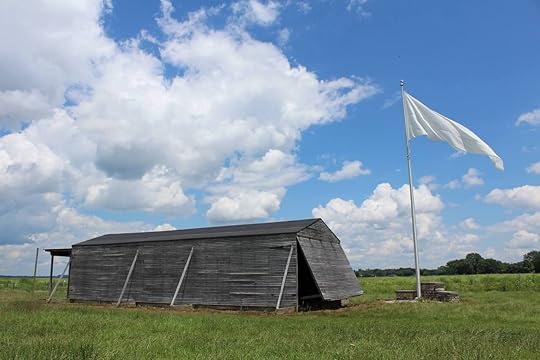
Photo: Dayton Aviation Heritage National Historical Park/Facebook
The Dayton aviation sites commemorate the innovation of the Wright Brothers, the aviation pioneers who built, and flew, the world’s first successfully piloted airplane. Four sites in the Dayton, Ohio, area where the brothers grew up are included in the nomination, overlapping with the Dayton Aviation Heritage National Historical Park properties. Of note are the Huffman Prairie Flying Field, where the brothers conducted test flights, and the cycle and print shop where they worked and conducted aeronautic experiments.
7. Early Chicago skyscrapers

Photo: Thomas Barrat/Shutterstock
Chicago is home to the very first skyscraper ever built, the Home Insurance Building, which was completed in 1885. Over the next couple of decades, Chicago’s downtown was built up with even more tall high-rises. According to the nomination, nine structures best exemplify the innovative Chicago School architectural style that emerged in the late 19th and early 20th centuries: the Auditorium, Second Leiter, Marquette, Rookery, Monadnock, Old Colony, Fisher, Schlesginer and Mayer, and Ludington buildings. Not only striking to the eye, each required unprecedented technology, like steel fabrication and early elevators, resulting in never-before-seen skyscrapers that towered over the city from as many as 20 stories up.
8. Ellis Island
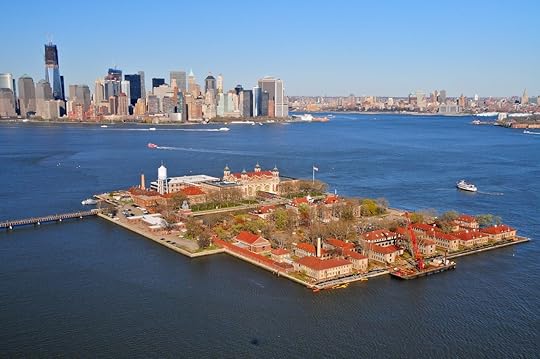
Photo: Richard Cavalleri/Shutterstock
There’s no American history without immigration, and there’s no greater symbol of American immigration than Ellis Island. Twelve million immigrants, mostly European, are said to have passed through Ellis Island between the late 1800s and mid-1900s, belonging to what the UNESCO website refers to as the Great Atlantic Migration. The Ellis Island National Museum has been housed in the main building, one of dozens involved in the immigration process, since 1990, and the entire site today belongs to the Statue of Liberty National Monument. Though Lady Liberty has had World Heritage status since 1984, Ellis Island, under a mile away, was only submitted to be considered for an inscription in December 2017.
9. Hopewell Ceremonial Earthworks
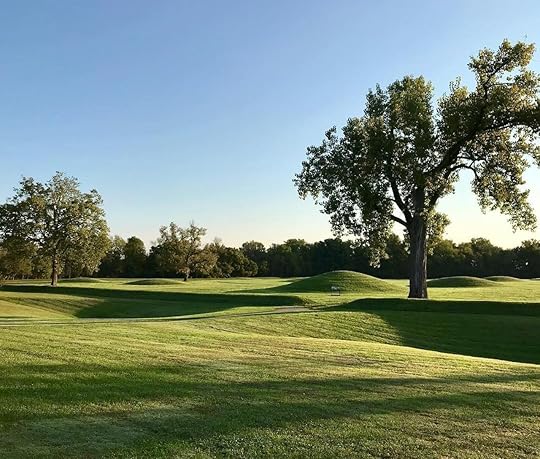
Photo: Hopewell Culture National Historical Park/Facebook
These archaeological sites in Ohio are of great cultural importance as evidence of Hopewell culture, a broad term for the Native American traditions that developed in North America during the Woodland period from around 1000 BC to 1000 AD. The nine submitted earthworks (large geometric patterns formed by manipulating land levels, such as creating mounds, sometimes in the image of animals or other spiritual symbols) are split between three sites: Fort Ancient State Memorial, Hopewell Culture National Historical Park, and Newark Earthworks State Memorial, all in Ohio. They’re the best-preserved of the dozens of surviving Hopewell earthworks, representing everything from prehistoric burial practices to ancient astronomical beliefs.
10. Marianas Trench Marine National Monument
We often envision soaring structures or natural features, like the Eiffel Tower or Victoria Falls, when we picture World Heritage sites. In a way, the Marianas Trench is impressive for its height, only it plunges deeper into the Pacific Ocean than Everest towers over the rest of the Himalayas. In total, the Marianas Trench measures roughly seven miles deep, 940 nauticals long, and 40 nautical miles wide. According to UNESCO, fewer people have explored its depths than set foot on the moon, making it one of the most mysterious and remote locales on the planet. Former president George W. Bush named the site, which includes both the trench and the submerged islands and volcanoes of the Mariana archipelago, a national monument in 2009. It was submitted as a World Heritage site in 2017, so UNESCO may be next to recognize it.
11. Marine protected areas of American Samoa
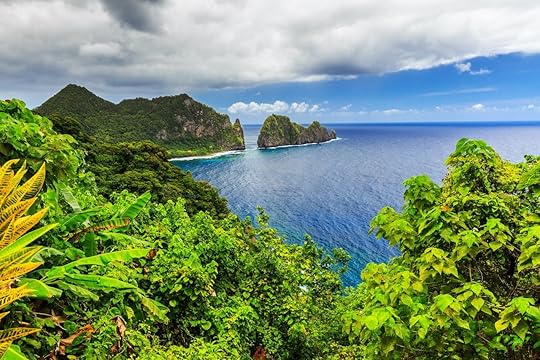
Photo: emperorcosar/Shutterstock
American Samoa is a US territory in the South Pacific, located roughly midway between Hawaii and Australia. The surrounding reefs are remarkably intact, protecting not only coral species, including some of the oldest on the planet, but also marine life like sea turtles, endangered giant clams, eagle rays, humpback whales, dolphins, and various sharks. Add in over a 1,000 distinct algae species, some of the largest fish you’ll ever see, and seabirds that nest in the area, and it’s no wonder why American Samoa’s protected waters are up for a World Heritage nomination. The Rose Atoll Marine National Monument, Rose Atoll National Wildlife Refuge, and National Marine Sanctuary of American Samoa were officially submitted, but the appeal also recognizes American Samoa’s societal contribution as the “birthplace of Polynesian culture.”
12. Moravian Church Settlements
There’s already one settlement founded by the Moravian Church on the World Heritage List, called Christiansfeld, but it’s all the way in Denmark. One of the oldest Protestant denominations, the church has roots in Central Europe but spread internationally as its practitioners emigrated. Many found their way to Bethlehem, Pennsylvania, during the 18th century, establishing a settlement there in the image of the one in Germany where the church is based. It remains the most impressive, and best-preserved, historical example of Moravian activity in the US, as well as exemplifies the German colonial architectural style.
13. Mount Vernon
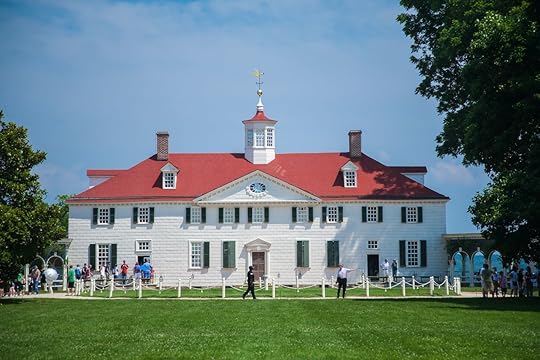
Photo: Bob Pool/Shutterstock
You’d think that the former plantation estate and burial place of the first US president would already be one of the country’s World Heritage sites. It was submitted to the tentative list over a decade ago for its historical value, as well as its impressive size and 18th-century structures, which were modeled on the English and Central European architectural styles of the day. Spread across nearly 50 acres on the banks of the Potomac River in Virginia, the property includes a palatial main house, gardens, servant hall, salt house, smoke house, ice house, original tomb, and more. Also on site is a Slave Memorial commemorating the men, women, and children who worked the plantation. Mount Vernon has been remarkably well-maintained and was inscribed as a National Historic Landmark in 1960.
14. Okefenokee National Wildlife Refuge
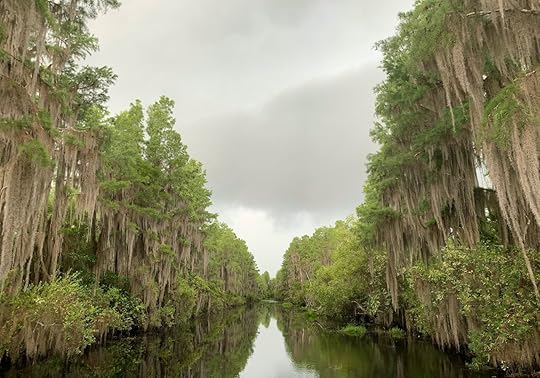
Photo: Chicken_Doc/Shutterstock
Okefenokee is among the largest, most eco-rich wildlife refuges in the US and perhaps the most impressive outside of the West Coast. It’s located in Georgia near the Florida border, with the southernmost part extending over the state line. The refuge was created around the Okefenokee Swamp, a massive freshwater ecosystem that feeds into the Atlantic Ocean and Gulf of Mexico. Countless species, endangered and otherwise, call the refuge home, notably alligators, black bears, gopher tortoises, and quadruple-digit moth species. Though evidence of logging has compromised some of the refuge’s ecological value, it has made great strides since being protected and remains an impressively hydrologically intact wetland.
15. Pacific Remote Islands Marine National Monument
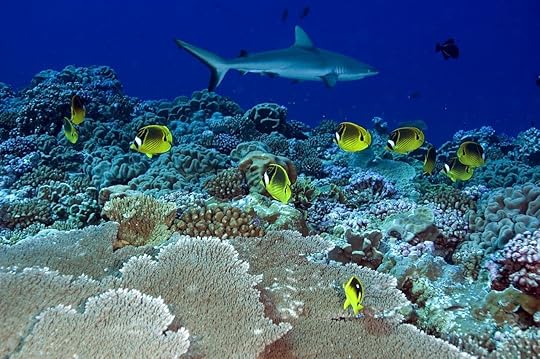
Photo: zaferkizilkaya/Shutterstock
Snorkeling in Hawaii is enough to sell you on the undersea Pacific landscape, but this island cluster southeast of the Aloha State is far more remote and even more wildlife-dense. In fact, it’s considered the “most widespread collection of coral reef, seabird, and shore bird protected areas on the planet,” according to UNESCO. It’s a massive monument, comprising three islands, three atolls, and the Kingman Reef. Together, they occupy over 300 million acres of prime Pacific real estate that’s jointly protected by the Fish and Wildlife Service and the National Oceanic and Atmospheric Administration. Though it’s best-known for its coral and seabird species, the marine monument also sees green sea turtles, reef sharks, Hawaiin monk seals, and more.
16. Petrified Forest National Park
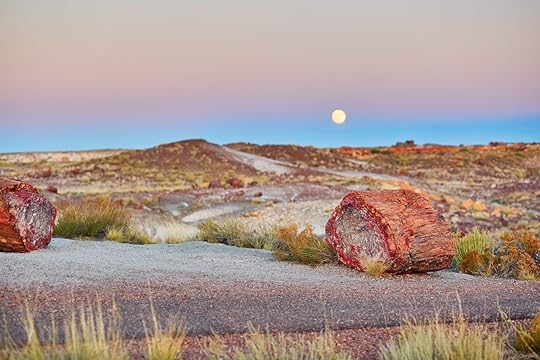
Photo: Ekaterina Pokrovsky/Shutterstock
It’s not easy to stand out amid Arizona’s extreme desertscapes, but Petrified Forest National Park is something special. It’s famous for its concentrations of petrified wood, or fossilized trees and similar vegetation that generally take on striking colors and striations due to mineralization. These fossils, as well as the dinosaur and other ancient animal remains that have been discovered here, provide significant insight into the flora and fauna of the Late Triassic period over 200 million years back. Not just a natural marvel, Petrified Forest National Park also houses evidence of some of the Southwest’s earliest human inhabitants and visitors, from prehistoric nomads to pueblo-dwelling Native Americans to Spanish explorers.
17. Serpent Mound
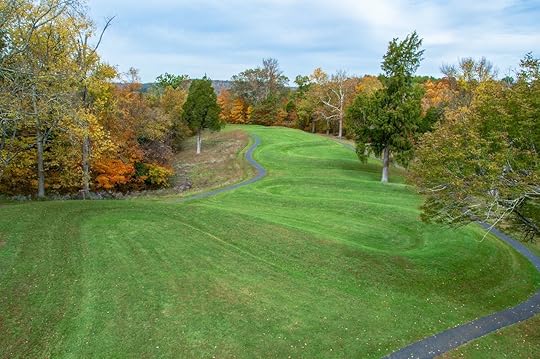
Photo: Oh London Tom/Shutterstock
Serpent Mound is another example of an earthwork, specifically an effigy mound, and the world’s largest remaining effigy mound at that. This particular earthwork was created in the image of a serpent, snaking more than a quarter-mile through southern Ohio and reaching heights of three feet. It’s unclear when, or by whom, exactly, the mound was erected, but carbon dating has estimated its origins to the Fort Ancient people from around 1120 CE. A lasting example of prehistoric Native American culture, it’s also just plain cool to look at.
18. Thomas Jefferson buildings
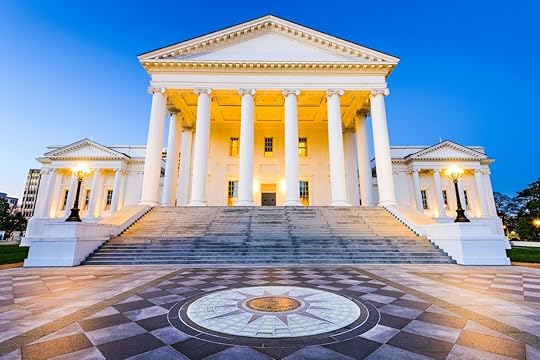
Photo: Sean Pavone/Shutterstock
Thomas Jefferson’s early 19th-century plantation, Monticello, and his visionary “academical village” at the University of Virginia in Charlottesville, were together inscribed as UNESCO World Heritage sites in 1987. The third president’s legacy extends beyond these two structures, however, explaining the appeal to add the Virginia State Capitol and Poplar Forest to the inscription. Jefferson leant his eye for design to the capitol building and secondary plantation estate between the late 1700s and early 1800s, creating two more candidates for the World Heritage List that exemplify the country’s relatively short architectural history.
19. White Sands National Park
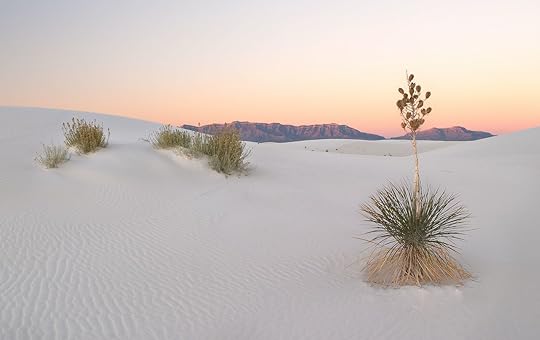
Photo: zschnepf/Shutterstock
New Mexico’s White Sands National Park is a brand new national park, only earning its designation on December 20, 2019. Prior to that, it had been classed as a national monument since 1933. Like Big Bend, White Sands is located in the Chihuahuan Desert. Though it’s a fraction of the size, it’s just as spectacular, famed for blindingly white dunes created by gypsum sand. According to UNESCO, its otherworldly landscape is similar to what you’d find on Mars, granted you wouldn’t mistake it for the red planet. 

More like this: The 29 new UNESCO World Heritage sites and why you should visit them
The post These 19 US landmarks may soon become World Heritage sites appeared first on Matador Network.

No traffic accidents with kids Oslo
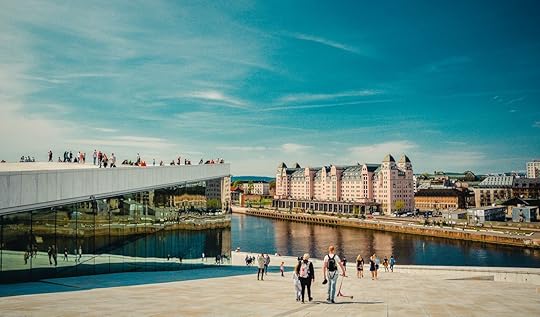
If safety is your number one priority when traveling abroad, make sure to add Norway to your must-visit list. The Norwegian Public Roads Administration revealed on January 1, 2020, that no children between the age of zero and 15 were killed in traffic accidents in the whole of Norway in 2019. To add to this good piece of news, only one person was killed in traffic in the capital city of Oslo this past year.
These encouraging numbers are part of a trend 50 years in the making; in 1970, 101 children were killed on the roads in Norway, and in 1975, there were 41 traffic deaths in Oslo.
Regulations to limit driving in the city center and in residential areas, reduced speed limits, cycling lanes, and safer cycling and walking areas around schools are all contributing factors to the positive figures.
There was a total of 110 traffic deaths throughout the rest of the country (population of 5.3 million) in 2019. 

More like this: 7 cities that are banning cars from their city centers
The post Zero children killed in traffic accidents in Norway in 2019 appeared first on Matador Network.

Best money belts for travel

Using a money belt is a common debate among travelers. For some, a money belt can provide peace of mind and a firm hand in hiding valuables in your possession. Others might see it more as a noticeable, bulky, and awkward crutch. Historically, they’ve been about as cool as Travis Wester’s character Jamie in EuroTrip who, of course, wore one religiously. Regardless of your stance, this under the radar — or at least under your clothing — accessory is touted as a sure way to keep your personal items safe, sound, and plainly out of sight.
However, money belts aren’t limited to making the anxious explorer feel better. We’re in a golden age of gear where even fanny packs are somehow cool, and so, money belts are making a comeback. Their designs have changed to the point where they’re no longer a one-size-fits-all mold. They’re practical to the point that even the most experienced travelers could benefit more and lessen the risk of having their items go missing (like this writer, whose wallet was stolen from her purse while in Germany but also whose money belt had extra euros to help her get by until her new cards arrived).
Whether for the safety-minded or self-assured, here are the best money belts catering to various traveling needs.
For feeling comfortable: Eagle Creek’s Silk Undercover Money Belt

Photo: Eagle Creek
Having the back of your money belt pressed against your waist for quite some time tends to make you sweaty and uncomfortable. However, this model from Eagle Creek is made with a natural silk that’s actually breathable, as well as washable and moisture resistant. There’s also a sweat-resistant coated lining, two zippered pockets best suited for holding a passport and money, a soft elastic waistband, and a back slip pocket. It’s smooth, and — dare we say — stylish.
For running while on the road: EAZYMATE’s Travel Belt

Photo: EAZYMATE
It can be tough to keep your workout going while away from home and the gym. This running belt from EAZYMATE comes in a wide range of sizes and is touted as being not only useful but also chic. It actually looks like it’s part of your running outfit. The belt perfectly conceals its two zippered pockets, one specifically made for accommodating smartphones, plus the additional pocket with a key buckle. It’s constructed from a spandex lycra material that’s soft and stretches.
For an alternative option: Pacsafe’s Coversafe X75 Anti-Theft RFID Blocking Neck Pouch

Photo: pacsafe
Here’s to thinking above the waist. This adjustable Pacsafe model is designed to be worn around the neck, like a necklace, but has a shoulder-length strap that is wire reinforced and slash-resistant. The upright neck pouch hides underneath your clothes and has a main compartment that zippers up to fit a passport plus one open slot packet, RFID blocking material, and a Velcro flap closure. It comes in two colors, too.
For something that’s dressier: Assorted travel scarves by Speakeasy Travel Supply

Photo: Speakeasy Travel Supply
With versions varying by print color or pattern, Speakeasy Travel Supply’s travel scarves are handmade with self-locking zippers and double-stitched or serged pockets. Another plus is that these scarfs can suit certain weather types based on the season (think cooler fabrics for summer, warmer materials for winter) or destination. And, they’re fashionable enough for a night out. Heading off to Antarctica? Consider getting the Polar Explorer.
For a strong sense of prevention: Peak Gear’s Travel Money Belt with RFID Block
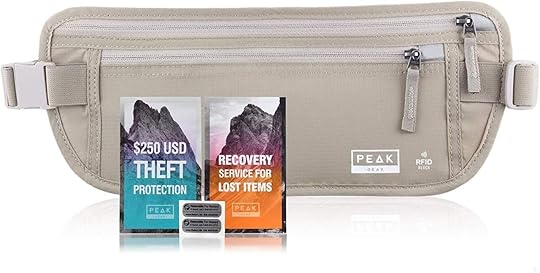
Photo: Amazon
Built to be slim, compact, and comfortable, this money belt has built-in RFID blocking and comes with a $250 theft insurance policy. Through a partnership with ReturnMe, which promotes itself as the world’s largest recovery company, Peak Gear accompanies this money belt with two free global recovery decals that can be put on your cellphone or other important items. Style-wise, it’s rather minimalist, which can certainly work in your favor.
For more flexible usage: Stashbandz’s Unisex Travel, Fitness, Medical Device Belt

Photo: StashBandz/Facebook
With an assortment of sizes and color choices, this versatile belt is made from spandex and can conceal and carry cargo that’s beyond common travel necessities. This Stashbandz belt consists of four wide pockets with one zipper pocket that all close via a fold-over flap. It’s built for action — as in running, hiking, or skiing — so you’ll find no qualms about slippage with its wide band.
For all-around usage: Boxiki’s Travel Money Belt
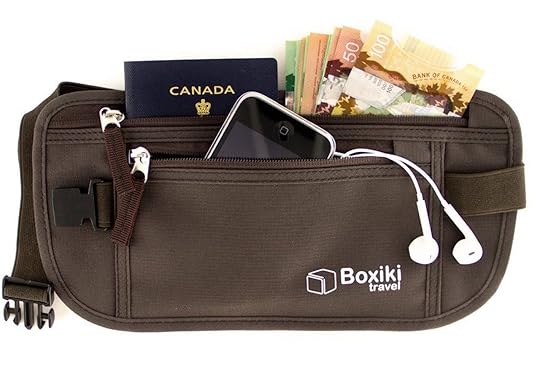
Photo: Boxiki
This money belt is made of thick, durable ripstop nylon to resist ripping, cutting, and wear and tear from frequent travel usage. There’s a secure release belt to prevent it from accidentally being unclipped, which is handy if you’re rushing through the airport. While it looks simple in design (brown and beige are your color options), it’s also quite roomy with two outer pockets and another one that’s tucked away. 

More like this: A fanny pack to match every adventure
The post Money belts are making a comeback, and they actually look cool now appeared first on Matador Network.

January 3, 2020
Eurail Global Pass additions 2020

Eurail travelers now have access to more of the world than ever before. Last year, Eurail added Great Britain, Lithuania, and Macedonia to its list of countries accessible with the Global Pass. In 2020, that list is being expanded even further to include Estonia and Latvia. Holders of the Eurail Global Pass can use local trains, high-speed trains, and night trains across Europe, from as far north as Scandinavia, west as Portugal, and east as Turkey, with the Baltics being the latest region added to the network.
Eurail’s Latvia hub will be in Riga, while the Estonia hub will be in Tallinn, and no seat reservations will be required for Eurail Pass holders in either country. The pass will also grant travelers a discount of up to 50 percent on ferry connections between Riga and Stockholm, and Tallinn to Scotkholm and Helsinki.
In addition to now having access to these Baltic countries, the pass will also give travelers access two new trains in France and Italy, which run along the French Riviera and northern Italy. Eurail is also making it easier for young people to travel in 2020, with youth passes now 25 percent off for those between the ages of 12 and 27. 

More like this: The 7 most glamorous sleeper trains in Europe
The post Eurail adds two countries to its Global Pass for 2020 appeared first on Matador Network.

Matador Network's Blog
- Matador Network's profile
- 6 followers



